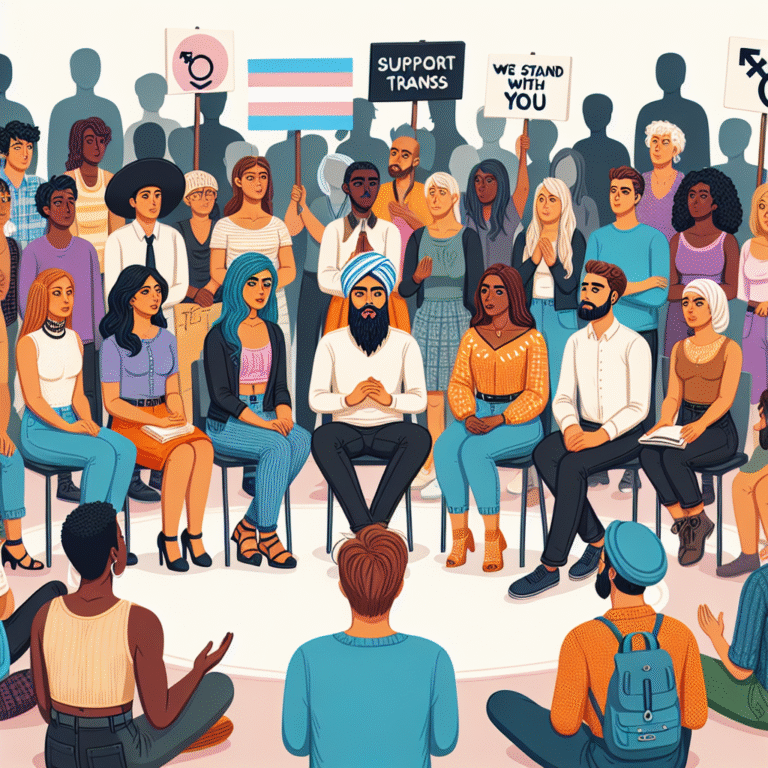
Introduction
Bullying has been an age-old issue that affects students across the globe. Regardless of their age, gender, or background, schoolchildren often find themselves victims of intimidation, ridicule, and exclusion. In recent years, however, a powerful shift has been taking place in educational environments. Schools are no longer passive observers; they are stepping up to actively combat bullying. Empowering Voices: How Schools are Leading the Charge Against Bullying becomes the clarion call for change. Instead of mere supervision, schools are promoting an atmosphere where communication, resilience, and support are paramount. This article explores the inspiring initiatives and strategies that schools implement to foster inclusive environments, equipping students with the tools they need to stand against bullying.
Understanding the Landscape of Bullying
Bullying manifests in various forms, including verbal, physical, social, and cyberbullying. The statistics can be mind-boggling—according to the National Center for Educational Statistics, roughly 20% of students report being bullied. Despite these figures, an incredible transformation is underway as educational institutions adopt a comprehensive approach to tackling this pervasive issue.
Case Study: The Rise of Confidential Reporting Systems
Many schools have implemented confidential reporting systems, allowing students to report bullying anonymously. This approach has proven effective in increasing reporting rates and decreasing incidents of violence. For instance, a middle school in Colorado saw a 30% reduction in bullying cases after introducing an app that allowed students to submit concerns privately.
Empowering Voices Through Education
Education serves as the backbone of prevention efforts. Empowering students with knowledge not only helps them recognize bullying but also equips them with the skills to resist and fight against it. Schools are introducing programs focused on emotional intelligence, conflict resolution, and empathy.
Implementing Social-Emotional Learning (SEL)
Social-emotional learning involves teaching students how to manage emotions, establish positive relationships, and make responsible decisions. Schools integrating SEL curricula have observed improved student behavior. A notable example is the Collaborative for Academic, Social, and Emotional Learning (CASEL), which supports over 320 districts in the U.S., leading to a significant decline in aggressive behavior.
Bystander Intervention Training
An equally compelling strategy is the inclusion of bystander intervention training. Students learn how to safely intervene when they witness bullying behaviors. For example, a successful program in New York City teaches students to recognize the difference between passive bystanding and active intervention, empowering them to become agents of change in their communities.
Peer Support Programs: Building Community Resilience
Building a sense of community is foundational in the fight against bullying. Peer support programs promote inclusivity and empathy among students.
Case Study: The Buddy Bench Initiative
This heartwarming initiative started in a Pennsylvania elementary school, where the "Buddy Bench" was established on the playground. When a student feels lonely or bullied, they sit on the bench, signaling others to come over and befriend them. The initiative encourages students to reach out and support one another, where students learn the importance of compassion. This approach not only mitigates bullying but fosters a culture of kindness.
Training and Involving Staff
Educators play a pivotal role in combatting bullying. Schools are increasingly focusing on training staff members to identify, address, and prevent bullying. Initiatives can range from awareness workshops to comprehensive professional development programs.
Creating Safe Spaces
Schools are creating safe spaces within their campuses, like comfort corners or counseling rooms dedicated to supporting victims of bullying and enabling healthy dialogues. Training programs encourage teachers to establish one-on-one connections with students. For instance, a high school in California reports that after introducing relationship-building strategies, it experienced a 40% decrease in bullying incidents within a year.
Leveraging Technology for Change
As bullying increasingly takes root in the digital world, schools are also harnessing technology’s power to combat cyberbullying.
Case Study: Anti-Bullying Apps
Educational institutions are adopting diverse apps designed to create positive online communities among students. For instance, StopIt, an app developed to allow students to report incidents of bullying or harassment anonymously, has seen significant adoption in schools nationwide, resulting in actionable peer intervention.
Community Involvement: Engaging Parents and Families
Empowering community members, especially parents, can drastically improve the success of anti-bullying campaigns. Schools are developing programs that involve parents in understanding the impact of bullying and equipping them with tools to support their children.
Family Engagement Workshops
Regular workshops provide a platform for parents and guardians to learn about warning signs, available resources, and effective communication strategies regarding bullying situations. A notable program in Nashville, Tennessee, has reported an increase in parent awareness and involvement, which significantly improves school climate as parents are encouraged to engage collaboratively in their children’s education.
Data-Driven Strategies: Measuring Success
Keeping track of anti-bullying efforts through data collection is essential. Schools are utilizing surveys, feedback forms, and incident reports to gauge the effectiveness of their initiatives.
| Initiative | Impact on Bullying Rates (%) | Comments |
|---|---|---|
| Confidential Reporting Systems | -30% | Increased reporting rates |
| Social-Emotional Learning (SEL) | -25% | Improved student behavior |
| Bystander Intervention Training | -20% | Increased intervention |
| Parent Engagement Programs | -15% | Improved community awareness |
Data-driven strategies provide clarity on initiatives that are resonating with students and will encourage institutions to tweak or ramp up successful programs.
Conclusion
The challenge of bullying in schools cannot be understated, yet the responsibility of the educational systems is clear: Empowering Voices: How Schools are Leading the Charge Against Bullying emphasizes the importance of creating a bullying-free environment. Schools wield the incredible power to reshape narratives and promote a culture where kindness, respect, and empowerment are the norm.
By implementing effective strategies such as social-emotional learning, peer support initiatives, and data-driven programs, schools are paving the way for a brighter future where students can thrive, free from the shadows of bullying. It is time to take action, inspire change, and ensure that every student has a voice and a safe space to express it.
FAQs
-
What is considered bullying in schools?
Bullying typically involves repeated aggressive behavior that is intentional, directed at someone with less power, and can take various forms—verbal, physical, social, or cyber. -
How can students report bullying safely?
Many schools offer anonymous reporting systems or apps where students can report bullying without fear of retaliation. Students are encouraged to talk to a trusted adult as well. -
What role do parents play in preventing bullying?
Parents can be proactive in their children’s education by engaging in workshops, fostering open communication at home, and encouraging their kids to speak out against bullying. -
What resources are available for schools to combat bullying?
Numerous organizations, like STOP Bullying and the National Bullying Prevention Center, provide resources, educational materials, and training for educators and students. - How can I help a friend who is being bullied?
Supporting a friend involves being there for them, listening, and encouraging them to speak to an adult. It might also mean standing up to the bullies when it’s safe to do so.
Empowering voices to combat bullying is not just a choice; it’s a necessity, fostering a more educated society where empathy and respect thrive. Let’s continue to create a future where every child feels safe and secure in expressing their individuality.


















